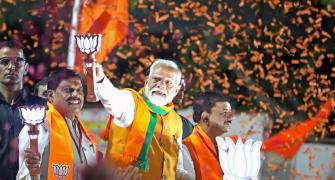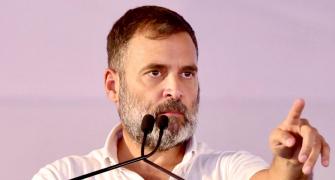India's fast growing services sector is likely to face huge shortage of trained manpower by 2012.
This is despite the fact that Asia's third largest economy has more than half its population in the working age group - the highest among large developing countries.
In a recent report published by the Confederation of Indian Industry and the Boston Consulting Group, has estimated India would face 'talent gap'-- the lack of right skills for the job required -- of more than 5 million by 2012, as existing educational institutions do not impart employable skills.
The report titled, 'India's demographic dilemma' brings out the fact the $1.1-trillion economy will have a shortfall of 750,000 skilled workers over the next five years.
On the other side, there will be a surplus of 1.3 million unskilled and unqualified school dropouts and illiterates.
However, a large part of the report was written before the current financial crisis started affecting India's growth rate, which dropped to 7.6 per cent in the second quarter ended September 2008 and many economists are predicting less than 7 per cent growth in the second half of the current fiscal (2008-09).
The report assumes 8 per cent growth for the Indian economy, backed by services registering 9 per cent growth rate and manufacturing at around 8 per cent.
The country's factory output dipped to -0.4 per cent in October 2008.
Given these assumptions, BCG estimates that the services sector, which now accounts for 52 per cent of gross domestic product, would generate 70 per cent of the economic growth by 2012, nearly 20 percentage points higher contribution in two decades.
This would mean that services would account for 60 per cent (or 38 million jobs) of new jobs that will be generated over the next five years.
However, during the same time, 89 million people are expected to join the workforce, which is 27 million higher than jobs created during the same period.
A vast majority, around 58 million, would be school dropouts, the report claimed.
"This combination on shortfall of qualified talent and surplus of unqualified and unskilled talent has the potential to not only derail India's growth prospects, but also challenge the basic fabric of the society," the report added.
62 million surplus agricultural workers:
Even as services and manufacturing are projected to generate jobs in large numbers, agriculture -- which contributes less than 18 per cent to GDP -- will also create 13 million extra jobs in the next five years.
Thus, the total number of people employed in agriculture would continue to be higher than 50 per cent at 287 million by 2012, as against 273 million as on 2007.
An interesting calculation is to compare agriculture productivity with other rapidly developing economies. The report estimates that in accordance with RDE standards, there is a surplus of 62 million workers in agriculture and if these workers shift away from agriculture, then India's GDP would rise by 25 per cent.
Services sector -- challenges ahead in training manpower:
The report covered four fast growing services sector -- information technology/IT enabled services, banking, retail and healthcare sector.
In the banking sector, it suggests state-run banks, which have more than 70 per cent market share, to change their reward structure to the one based on performance-linked bonuses and promotion, at the same time retaining their existing staff.
Banking jobs will increase 54 per cent in the next five years, but at the same time this sector is finding it difficult to attract talent.
The application-to-job ratio in this sector has dropped to 100 during last year as compared to 400 a decade earlier.
In the case of specialist roles, the banks receive only 12 applications for a vacant position, the study says.
Apart from recruitment challenges, the banks will also face problems in retaining people, with more than half of total employees having less than 5 years of experience and an average age of 25-30 years.
In the healthcare sector, there is going to be an incremental demand of 300,000 doctors and 600,000 nurses by 2012. However, the Indian medical education capacity is only 31,000 per year.
Thus, the report projects acute shortage in this sector over the next five years.
Solution -- vocational education:
The report largely emphasises on the role of the government to rectify the 'demographic dilemma'.
First, it wants to make vocational education a viable option for school dropouts, as this group will constitute the majority of labour force in the next five years.
It estimates a demand for 5.4 million for vocational training every year, but the total supply is estimated at only 1.5 million with 0.8 million from the private institutes.
The report recommends the government to shift its role from the provider of education to a financier for a student seeking education.








